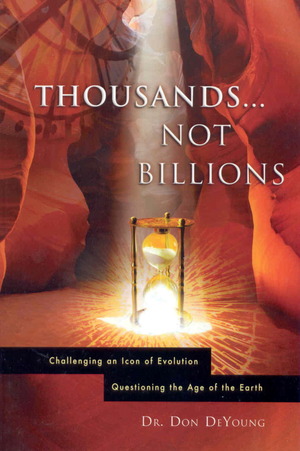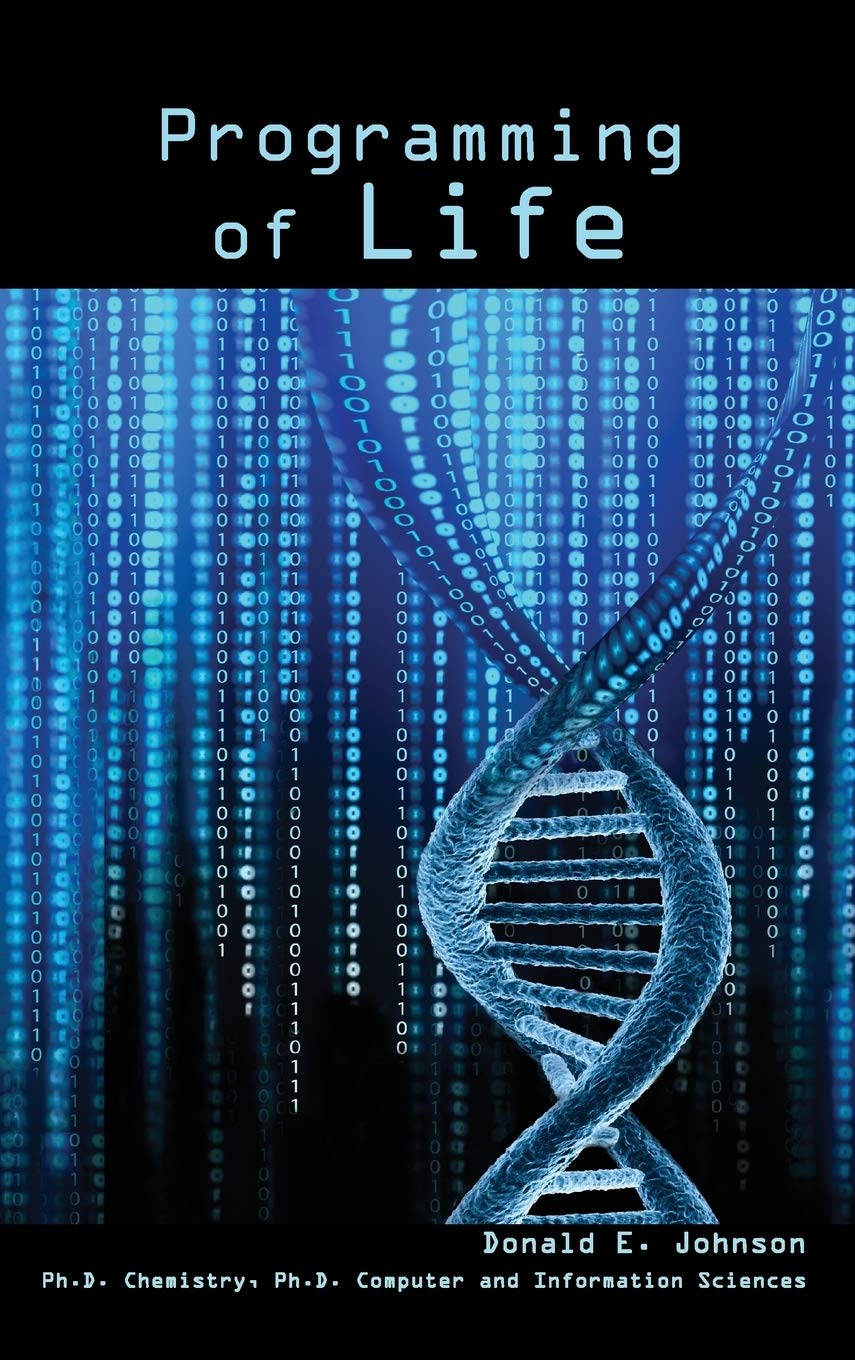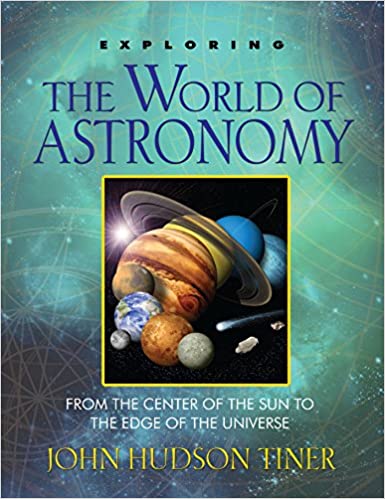December 2021
Subscribe to Dialogue
FEATURED BOOKS AND DVDS
Paperback / $6.00 / 55 Pages
Telomeres are motif nucleotide repeats (in mammals generally TTAGGG and the reverse sequence CCCTAA) located at the ends of chromosomes to protect the information on the DNA molecule from gradual loss as the chromosome is duplicated. These sequences at the ends of chromosomes are typically 5000 to 15000 nucleotides long.
Particular interest in telomeres comes from a special evolutionary problem. It so happens that humans have 46 chromosomes while apes have 48. If humans indeed evolved from apes a relatively short time ago (about 6 million years) then the ancestor would be hard pressed to lose this much genetic information in so short a time. Scientists proposed a solution in the early 1980s by supposing that two small ape-like chromosomes happened to join end to end resulting in one long chromosome such as human chromosome 2, for example.
Of course, if this were the case, there should be a lot of telomere sequences in the middle of that human chromosome. Scientists found some telomere-like sequences in an appropriate location, but only 798 nucleotides instead of the expected 10,000 to 30,000 [twice the number of nucleotides at the end of one chromosome]. This site was promptly labelled “degenerate” because they believed the sequence had become corrupted. However, calling it degenerate does not explain how or why this would have occurred.
Further examination of the supposed fusion site by scientists then revealed a strange situation: straddling the supposed fusion site was a gene. Upstream from the fusion site is Exon 1 which is expressed in the protein. Next comes an intron (not expressed as part of the gene) but inside the intron is the fusion site. Then downstream from the intron is exon 2, then intron 2 and exon 3. Scientist Jeffrey Tomkins, who called attention to the location of this gene, informs us of the significance of this find: “The location of the so-called fusion sequence inside a functional gene associated with the genetics of a variety of cellular processes strongly refutes the idea that it’s the accidental by-product of a head-to-head telomeric fusion. Genes are not formed by catastrophic chromosomal fusions!” [Tomkins p. 3]
Another problem for evolutionary explanations is that there should be evidence of a redundant centromere. This structure consists of special sequences about 250,000 to 5 million nucleotides long. This is the ‘waist-line’ of the chromosome and the site where the chromosome is attached to microtubules for separation in meiosis and mitosis. If two chromosomes joined end to end, there should initially have been two centromeres in one chromosome. However, the supposed remnant site is only about 40,000 nucleotides long. Amusingly, as with the telomeres, the cryptic (hidden) centromere is located not only inside a gene but inside both intron and exon regions of the gene. Dr. Tomkins remarks: “The fact that the so-called fossil or cryptic centromere is a functional region inside an important protein-coding gene completely refutes the idea that it’s a defunct centromere.” [Jeffrey P. Tomkins. 2020. Human Chromosome 2 Fusion Never Happened. Acts and Facts 49 (5): pp. 1-6 available under Camp List under issues relating to human origins.]
Order OnlinePaperback / $14.00 / 200 Pages
Telomeres are motif nucleotide repeats (in mammals generally TTAGGG and the reverse sequence CCCTAA) located at the ends of chromosomes to protect the information on the DNA molecule from gradual loss as the chromosome is duplicated. These sequences at the ends of chromosomes are typically 5000 to 15000 nucleotides long.
Particular interest in telomeres comes from a special evolutionary problem. It so happens that humans have 46 chromosomes while apes have 48. If humans indeed evolved from apes a relatively short time ago (about 6 million years) then the ancestor would be hard pressed to lose this much genetic information in so short a time. Scientists proposed a solution in the early 1980s by supposing that two small ape-like chromosomes happened to join end to end resulting in one long chromosome such as human chromosome 2, for example.
Of course, if this were the case, there should be a lot of telomere sequences in the middle of that human chromosome. Scientists found some telomere-like sequences in an appropriate location, but only 798 nucleotides instead of the expected 10,000 to 30,000 [twice the number of nucleotides at the end of one chromosome]. This site was promptly labelled “degenerate” because they believed the sequence had become corrupted. However, calling it degenerate does not explain how or why this would have occurred.
Further examination of the supposed fusion site by scientists then revealed a strange situation: straddling the supposed fusion site was a gene. Upstream from the fusion site is Exon 1 which is expressed in the protein. Next comes an intron (not expressed as part of the gene) but inside the intron is the fusion site. Then downstream from the intron is exon 2, then intron 2 and exon 3. Scientist Jeffrey Tomkins, who called attention to the location of this gene, informs us of the significance of this find: “The location of the so-called fusion sequence inside a functional gene associated with the genetics of a variety of cellular processes strongly refutes the idea that it’s the accidental by-product of a head-to-head telomeric fusion. Genes are not formed by catastrophic chromosomal fusions!” [Tomkins p. 3]
Another problem for evolutionary explanations is that there should be evidence of a redundant centromere. This structure consists of special sequences about 250,000 to 5 million nucleotides long. This is the ‘waist-line’ of the chromosome and the site where the chromosome is attached to microtubules for separation in meiosis and mitosis. If two chromosomes joined end to end, there should initially have been two centromeres in one chromosome. However, the supposed remnant site is only about 40,000 nucleotides long. Amusingly, as with the telomeres, the cryptic (hidden) centromere is located not only inside a gene but inside both intron and exon regions of the gene. Dr. Tomkins remarks: “The fact that the so-called fossil or cryptic centromere is a functional region inside an important protein-coding gene completely refutes the idea that it’s a defunct centromere.” [Jeffrey P. Tomkins. 2020. Human Chromosome 2 Fusion Never Happened. Acts and Facts 49 (5): pp. 1-6 available under Camp List under issues relating to human origins.]
Order OnlineHardcover / $18.00 / 94 Pages / full colour
Telomeres are motif nucleotide repeats (in mammals generally TTAGGG and the reverse sequence CCCTAA) located at the ends of chromosomes to protect the information on the DNA molecule from gradual loss as the chromosome is duplicated. These sequences at the ends of chromosomes are typically 5000 to 15000 nucleotides long.
Particular interest in telomeres comes from a special evolutionary problem. It so happens that humans have 46 chromosomes while apes have 48. If humans indeed evolved from apes a relatively short time ago (about 6 million years) then the ancestor would be hard pressed to lose this much genetic information in so short a time. Scientists proposed a solution in the early 1980s by supposing that two small ape-like chromosomes happened to join end to end resulting in one long chromosome such as human chromosome 2, for example.
Of course, if this were the case, there should be a lot of telomere sequences in the middle of that human chromosome. Scientists found some telomere-like sequences in an appropriate location, but only 798 nucleotides instead of the expected 10,000 to 30,000 [twice the number of nucleotides at the end of one chromosome]. This site was promptly labelled “degenerate” because they believed the sequence had become corrupted. However, calling it degenerate does not explain how or why this would have occurred.
Further examination of the supposed fusion site by scientists then revealed a strange situation: straddling the supposed fusion site was a gene. Upstream from the fusion site is Exon 1 which is expressed in the protein. Next comes an intron (not expressed as part of the gene) but inside the intron is the fusion site. Then downstream from the intron is exon 2, then intron 2 and exon 3. Scientist Jeffrey Tomkins, who called attention to the location of this gene, informs us of the significance of this find: “The location of the so-called fusion sequence inside a functional gene associated with the genetics of a variety of cellular processes strongly refutes the idea that it’s the accidental by-product of a head-to-head telomeric fusion. Genes are not formed by catastrophic chromosomal fusions!” [Tomkins p. 3]
Another problem for evolutionary explanations is that there should be evidence of a redundant centromere. This structure consists of special sequences about 250,000 to 5 million nucleotides long. This is the ‘waist-line’ of the chromosome and the site where the chromosome is attached to microtubules for separation in meiosis and mitosis. If two chromosomes joined end to end, there should initially have been two centromeres in one chromosome. However, the supposed remnant site is only about 40,000 nucleotides long. Amusingly, as with the telomeres, the cryptic (hidden) centromere is located not only inside a gene but inside both intron and exon regions of the gene. Dr. Tomkins remarks: “The fact that the so-called fossil or cryptic centromere is a functional region inside an important protein-coding gene completely refutes the idea that it’s a defunct centromere.” [Jeffrey P. Tomkins. 2020. Human Chromosome 2 Fusion Never Happened. Acts and Facts 49 (5): pp. 1-6 available under Camp List under issues relating to human origins.]
Order OnlineDVD / $16.00 / 44 Minutes
Telomeres are motif nucleotide repeats (in mammals generally TTAGGG and the reverse sequence CCCTAA) located at the ends of chromosomes to protect the information on the DNA molecule from gradual loss as the chromosome is duplicated. These sequences at the ends of chromosomes are typically 5000 to 15000 nucleotides long.
Particular interest in telomeres comes from a special evolutionary problem. It so happens that humans have 46 chromosomes while apes have 48. If humans indeed evolved from apes a relatively short time ago (about 6 million years) then the ancestor would be hard pressed to lose this much genetic information in so short a time. Scientists proposed a solution in the early 1980s by supposing that two small ape-like chromosomes happened to join end to end resulting in one long chromosome such as human chromosome 2, for example.
Of course, if this were the case, there should be a lot of telomere sequences in the middle of that human chromosome. Scientists found some telomere-like sequences in an appropriate location, but only 798 nucleotides instead of the expected 10,000 to 30,000 [twice the number of nucleotides at the end of one chromosome]. This site was promptly labelled “degenerate” because they believed the sequence had become corrupted. However, calling it degenerate does not explain how or why this would have occurred.
Further examination of the supposed fusion site by scientists then revealed a strange situation: straddling the supposed fusion site was a gene. Upstream from the fusion site is Exon 1 which is expressed in the protein. Next comes an intron (not expressed as part of the gene) but inside the intron is the fusion site. Then downstream from the intron is exon 2, then intron 2 and exon 3. Scientist Jeffrey Tomkins, who called attention to the location of this gene, informs us of the significance of this find: “The location of the so-called fusion sequence inside a functional gene associated with the genetics of a variety of cellular processes strongly refutes the idea that it’s the accidental by-product of a head-to-head telomeric fusion. Genes are not formed by catastrophic chromosomal fusions!” [Tomkins p. 3]
Another problem for evolutionary explanations is that there should be evidence of a redundant centromere. This structure consists of special sequences about 250,000 to 5 million nucleotides long. This is the ‘waist-line’ of the chromosome and the site where the chromosome is attached to microtubules for separation in meiosis and mitosis. If two chromosomes joined end to end, there should initially have been two centromeres in one chromosome. However, the supposed remnant site is only about 40,000 nucleotides long. Amusingly, as with the telomeres, the cryptic (hidden) centromere is located not only inside a gene but inside both intron and exon regions of the gene. Dr. Tomkins remarks: “The fact that the so-called fossil or cryptic centromere is a functional region inside an important protein-coding gene completely refutes the idea that it’s a defunct centromere.” [Jeffrey P. Tomkins. 2020. Human Chromosome 2 Fusion Never Happened. Acts and Facts 49 (5): pp. 1-6 available under Camp List under issues relating to human origins.]
Order OnlinePaperback / $22.00 / 171 Pages / black and white illustrations
Telomeres are motif nucleotide repeats (in mammals generally TTAGGG and the reverse sequence CCCTAA) located at the ends of chromosomes to protect the information on the DNA molecule from gradual loss as the chromosome is duplicated. These sequences at the ends of chromosomes are typically 5000 to 15000 nucleotides long.
Particular interest in telomeres comes from a special evolutionary problem. It so happens that humans have 46 chromosomes while apes have 48. If humans indeed evolved from apes a relatively short time ago (about 6 million years) then the ancestor would be hard pressed to lose this much genetic information in so short a time. Scientists proposed a solution in the early 1980s by supposing that two small ape-like chromosomes happened to join end to end resulting in one long chromosome such as human chromosome 2, for example.
Of course, if this were the case, there should be a lot of telomere sequences in the middle of that human chromosome. Scientists found some telomere-like sequences in an appropriate location, but only 798 nucleotides instead of the expected 10,000 to 30,000 [twice the number of nucleotides at the end of one chromosome]. This site was promptly labelled “degenerate” because they believed the sequence had become corrupted. However, calling it degenerate does not explain how or why this would have occurred.
Further examination of the supposed fusion site by scientists then revealed a strange situation: straddling the supposed fusion site was a gene. Upstream from the fusion site is Exon 1 which is expressed in the protein. Next comes an intron (not expressed as part of the gene) but inside the intron is the fusion site. Then downstream from the intron is exon 2, then intron 2 and exon 3. Scientist Jeffrey Tomkins, who called attention to the location of this gene, informs us of the significance of this find: “The location of the so-called fusion sequence inside a functional gene associated with the genetics of a variety of cellular processes strongly refutes the idea that it’s the accidental by-product of a head-to-head telomeric fusion. Genes are not formed by catastrophic chromosomal fusions!” [Tomkins p. 3]
Another problem for evolutionary explanations is that there should be evidence of a redundant centromere. This structure consists of special sequences about 250,000 to 5 million nucleotides long. This is the ‘waist-line’ of the chromosome and the site where the chromosome is attached to microtubules for separation in meiosis and mitosis. If two chromosomes joined end to end, there should initially have been two centromeres in one chromosome. However, the supposed remnant site is only about 40,000 nucleotides long. Amusingly, as with the telomeres, the cryptic (hidden) centromere is located not only inside a gene but inside both intron and exon regions of the gene. Dr. Tomkins remarks: “The fact that the so-called fossil or cryptic centromere is a functional region inside an important protein-coding gene completely refutes the idea that it’s a defunct centromere.” [Jeffrey P. Tomkins. 2020. Human Chromosome 2 Fusion Never Happened. Acts and Facts 49 (5): pp. 1-6 available under Camp List under issues relating to human origins.]
Order Online







